Diseases of the currant in the photo
Currant is a real medicine for humans. Its fruits and leaves contain a huge amount of all kinds of useful substances: vitamins (E and C, as well as many others), trace elements, acids and sugars, various biologically active compounds.
Content:
- Diseases of the currant
- Currant pests
- Currant pest and disease control measures
- Prevention of currant diseases
Thanks to its valuable composition, it is popular among lovers of traditional treatment, but it can also get sick itself. At the same time, massive outbreaks of disease can completely rob you of your harvest. Therefore, you should take precautions very seriously and find out in advance what you may encounter.
Diseases of the currant
Almost all major ailments currants cause fungi such as:
- anthracnose (vague small dark brownish spots of irregular shape appear on the leaves, later the leaves acquire a brown color, curl and fall off, the growth of shoots and yield decrease);
- spheroteka or American powdery mildew (affects young shoots, leaves, ovaries and berries, which are covered with a powdery white bloom, thickening and taking the form of a dark brown felt, later all parts of the plant dry out);
- terry or reversion (the causative agent of the disease is in the sap of the plant, affects the entire bush, changing the shape and color of flowers and leaves);
- septoria or white spot (leaves are affected by numerous grayish spots with a dark brown border, on which black dots of the fungus with spores are later formed, then the leaves curl and fall off);
- goblet rust (orange specks appear on the leaves with yellow pads of spores, later they turn into pimples in the form of goblets).
Currant pests
In addition to fungal diseases, currants are susceptible to attack from various pests, the main ones of which are:
- currant leaf gall midge (small mosquitoes that feed on young, not unfolded leaves, disfiguring them);
- currant goldfish (the beetle larva feeds on the core of the branches, the tops of the shoots begin to dry out);
- currant kidney mite (mites colonize buds on plants, as a result of which they die);
- spider mite (covers the leaves with cobwebs and sucks the juices out of them, the leaves turn yellow and die off);
- currant kidney moth (damages both the kidneys and berries, the kidneys do not bloom and die);
- gooseberry moth (the butterfly lays eggs inside the flowers, caterpillars emerge from them, which entangle the fruits with cobwebs and feed on them);
- pale-footed gooseberry sawfly (green larvae eat all the leaves, only the veins remain);
- yellow gooseberry sawfly (green-blue larvae with black dots eat the leaves);
- gooseberry moth (caterpillars eat up the entire leaf, leaving only the petiole);
- currant glass (pink or white caterpillars gnaw through the core of the branches, the shoots dry up and die off);
- gooseberry shoot aphid (sucks juice from the ends of the shoots and from the leaves, which curl up into a ball);
- leaf gall aphid (the aphid feeds on the underside of the leaves, red swellings form on the upper part).
Having familiarized yourself with the external signs of diseases and pests of currants, it is easy to find photos on the Internet and more accurately determine which enemy you are facing.
Currant pest and disease control measures
Having found signs of anthracnose or septoria disease, it is necessary to spray with copper sulfate or copper chloroxide in a dilution of 10 liters of water - 40 g of the drug.
In the fight against goblet rust, a 1% solution of Bordeaux liquid is used: the first time when the leaves open, the second - after flowering, and the third - after 8-10 days.
The destruction of the spheroteka consists in spraying the bushes and soil with iron vitriol in a dilution of 10 liters of water - 300 g of the drug. At the first signs of illness during the growing season, the bushes are sprayed with soda ash (for 10 liters of water - 50 g of soda) with the addition of 50 g of soap. The treatment is repeated 2 or 3 times after 10 days.
Terry or reversion is a fairly common and dangerous disease. black currant... In this case, the plant becomes sterile, and pruning and other methods are powerless. If you notice that during the flowering period the flowers of the currant dry up completely, do not fall off for a long time and the fruit does not form, you need to uproot and burn the diseased bush. Terry is transmitted from one plant to another by bud mites, aphids, as well as the cultivation of already infected shoots.
For pest control, there are special spray solutions that you can buy at the store.
Prevention of currant diseases
Precautions, a kind of prevention, include the following actions:
- digging the earth around the plants;
- destruction of fallen leaves;
- pruning.
Many diseases can be avoided with proper care of the bushes: in the event of a lack of moisture, the currants lose their greens, turn yellow, the berries crumble, and with an excess of moisture, root rot develops.
Lack of light leads to the fact that the berries ripen poorly and fall off, and excess light contributes to leaf burns.
Using healthy, disease-resistant planting material, you can avoid damage to currants by pests and diseases.



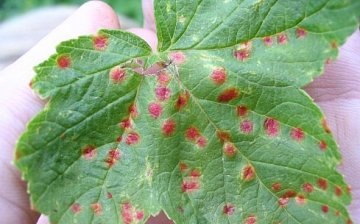
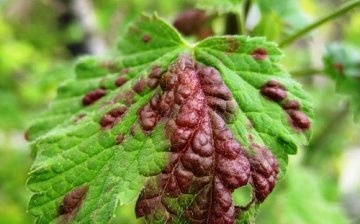
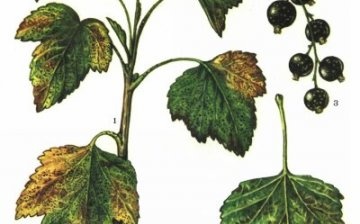
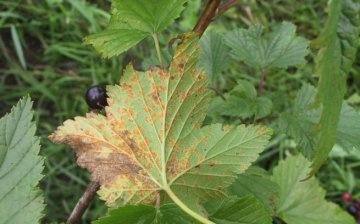




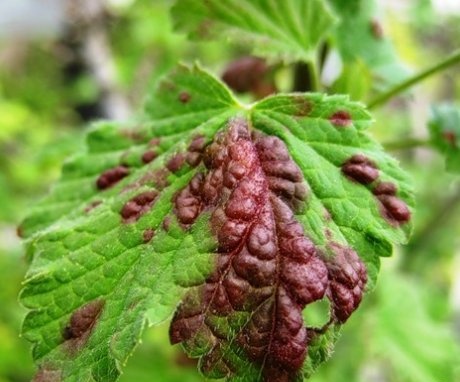
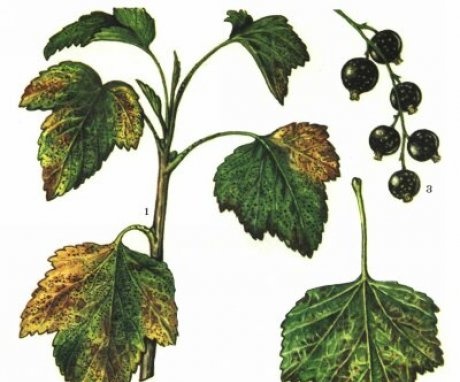
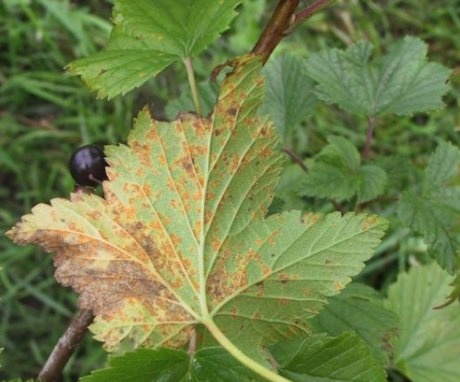
Some time ago, we had several huge bushes with currants growing in our garden. Then they were overcome by some kind of sore. The leaves turned yellow, rusted, curled, fell off. There are fewer berries. No matter how much mom tried to fight it, it all ended with the fact that they were completely removed.